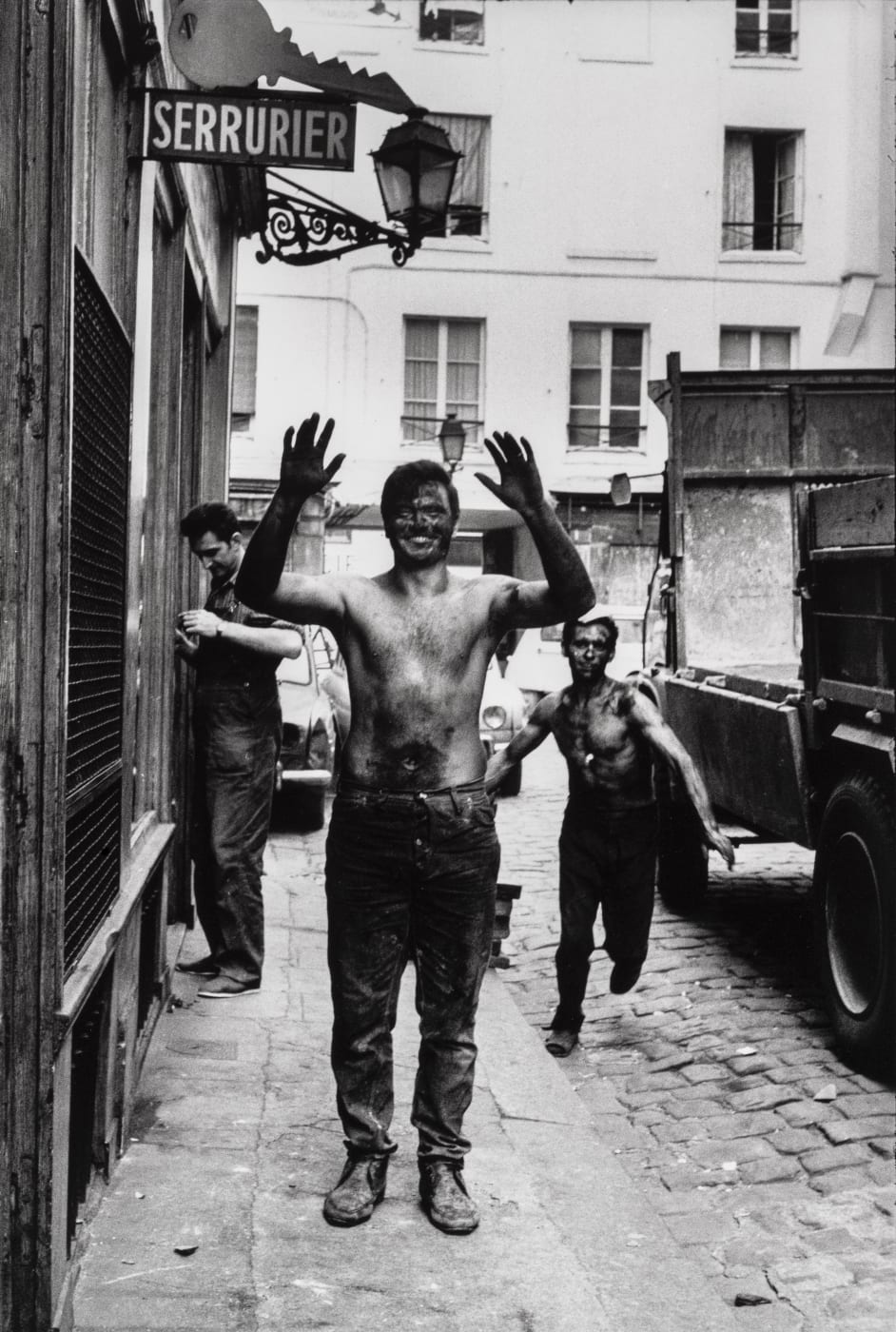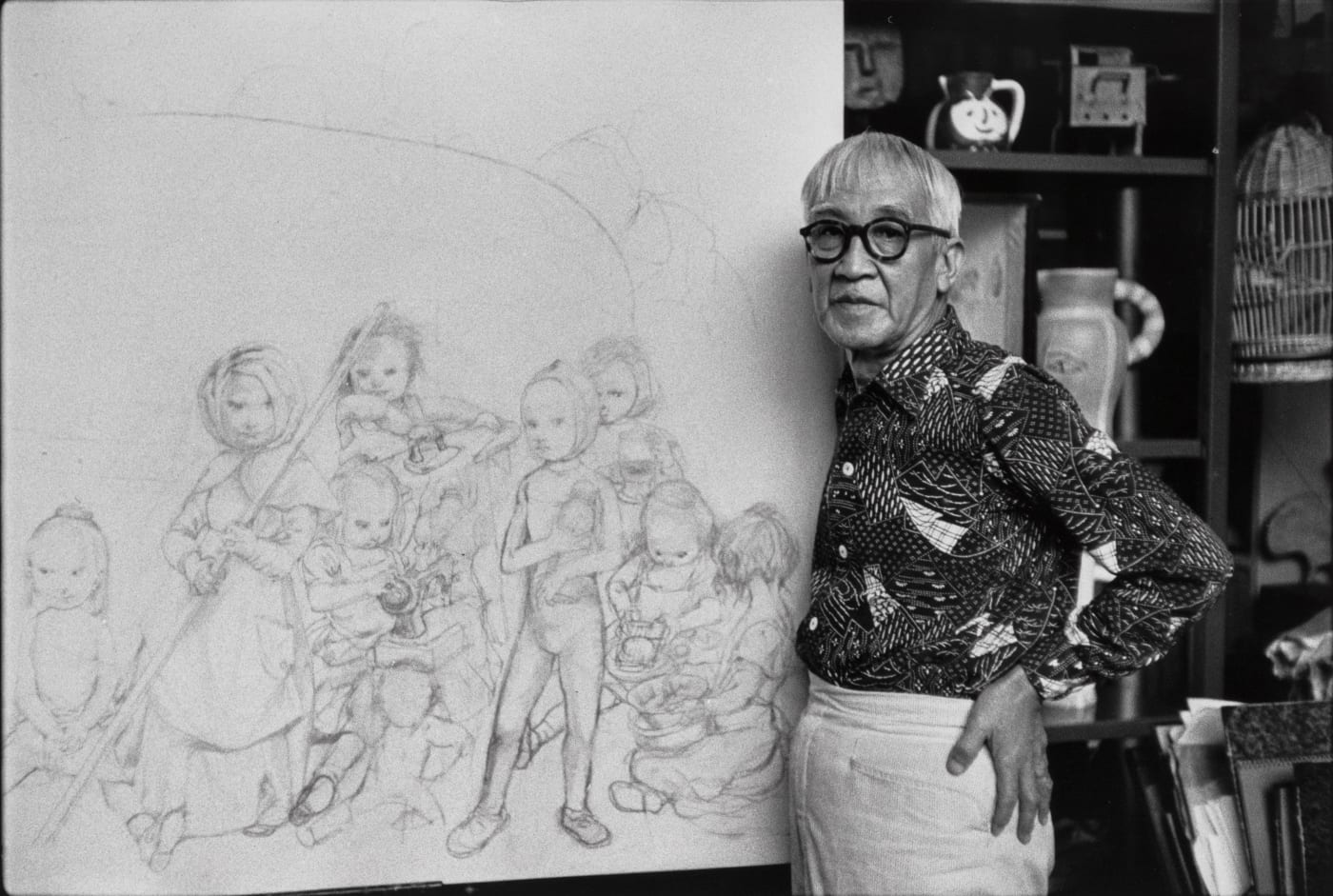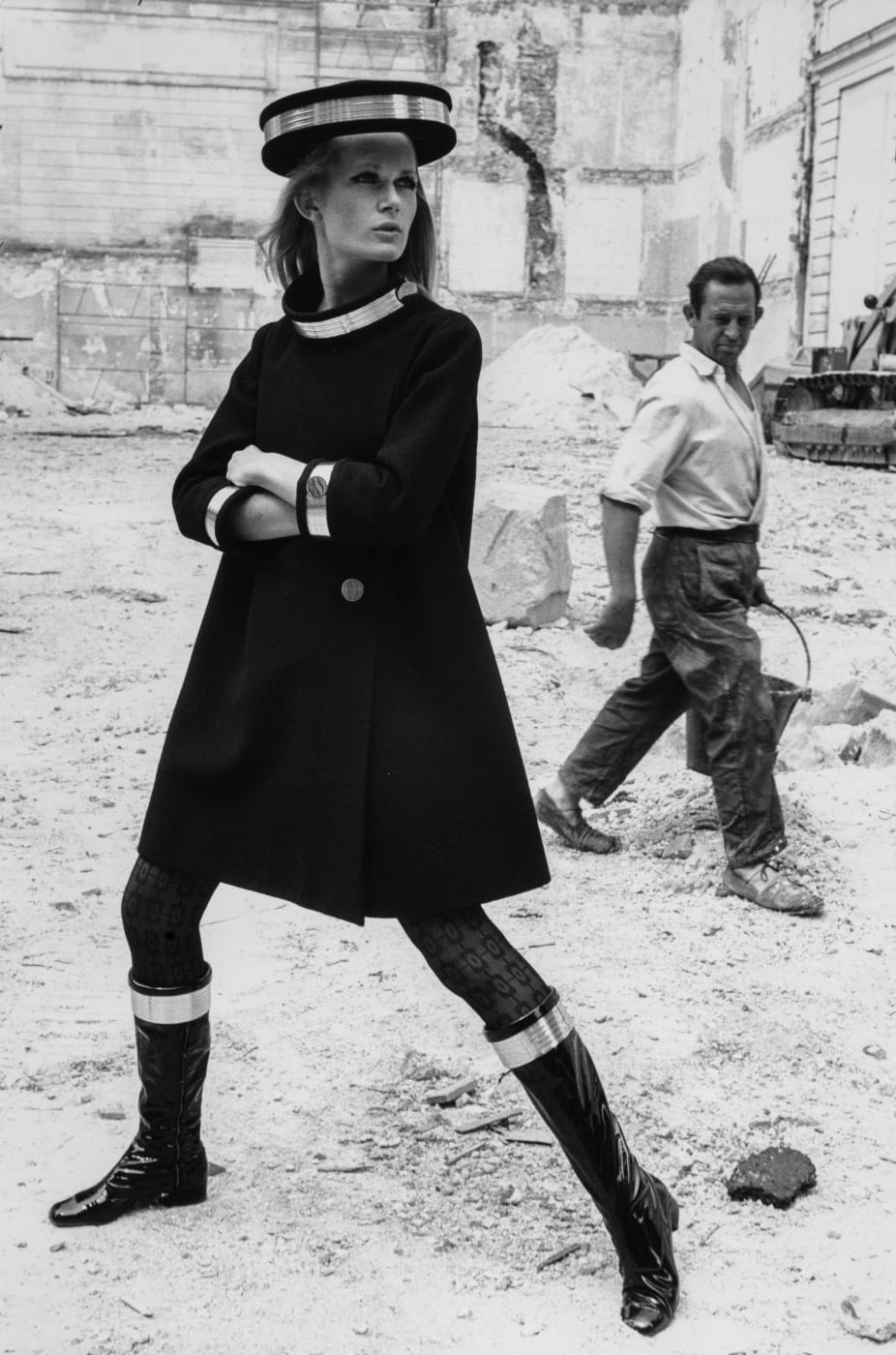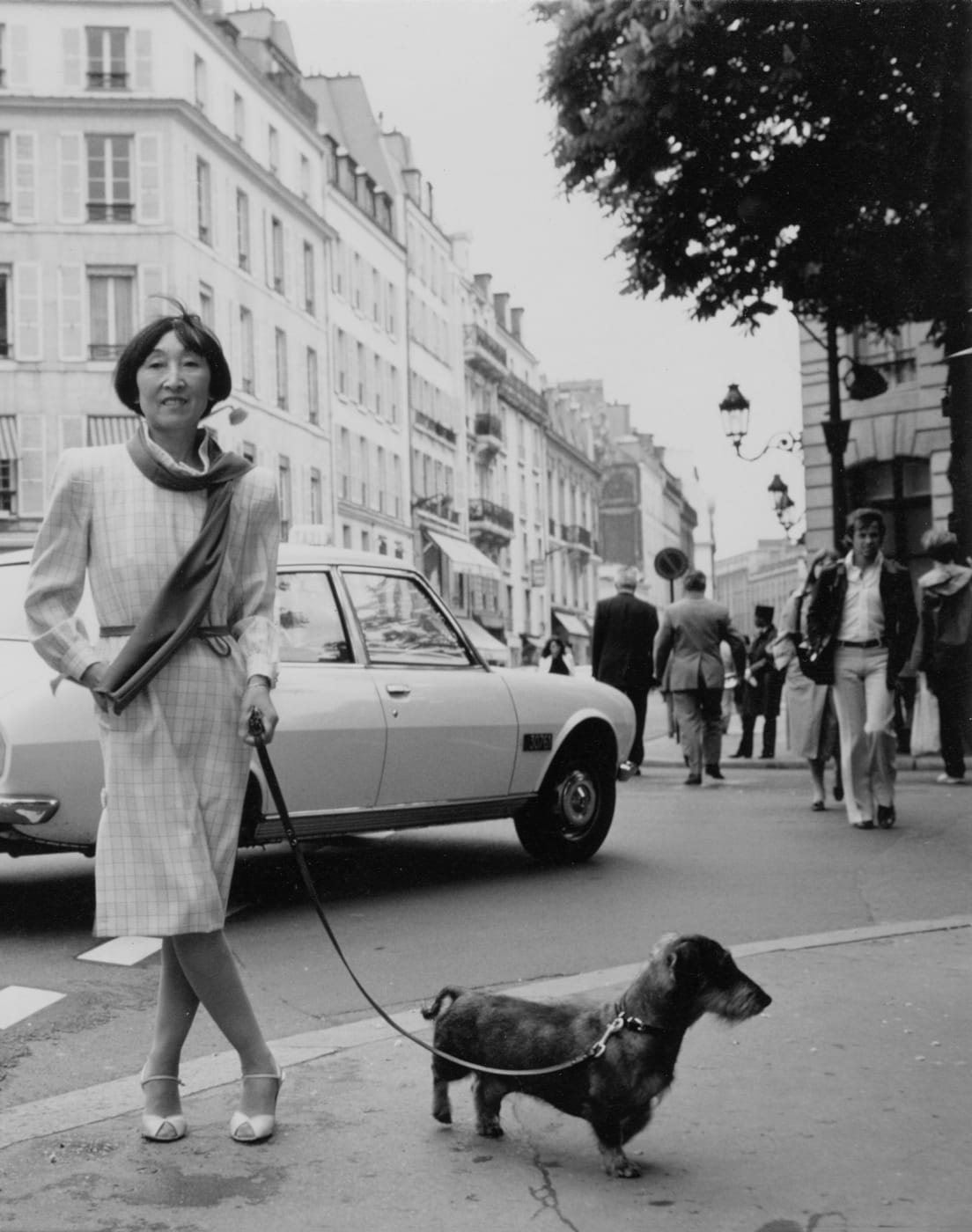Yoshi Takata was born in 1916 in Yusima Mikumi-cho, near Tokyo, Japan and moved to Paris in 1954. With the eye of an outsider finding her place in the bustling French capital, Yoshi Takata’s surrealist approach set her apart. Her photographs are often animated by a strange force and a sense of humour that distinguish her work from that of her contemporaries as she searches for peculiar and incongruous moments of Parisian life.
Coming from a large industrial family, Yoshi Takata took an interest in journalism and got her first job as an assistant interpreter at Agence France Presse in Tokyo in 1947. There, she met photographer Ihei Kimura, who introduced her to photography.
When she left AFP in 1954, Kimura asked her to accompany him on a trip to Paris and it was there that she became acquainted with the well-known humanist photographers Édouard Boubat, Brassaï, Henri Cartier-Bresson and Robert Doisneau. Discovering Paris at their sides, Yoshi Takata refined her practice, inspired by their ability to capture poignant moments of poetic realism.

In the mid-20th century, coal merchants were an ordinary sight on the streets of Paris. Yoshi Takata captures an unexpected joyful moment in an everyday scene, revealing her singular way of looking at the city. A coal merchant identified as Mimile in the title smiles back at the photographer, while his colleague runs to be part of the shot. The scene brings to mind Robert Doisneau’s idea of the role of the photographer as ‘taking the hurried man by the arm and showing him the free and permanent spectacle of everyday life.’
Mimile le charbonnier, 1959
Silver print
40.2 x 30.1 cm (15.83 x 11.85 in)
In a photograph, each one takes and shows the facet or the moment of this reality that suits them best, to prove to others that their poetic universe exists, to let them share the wonder of a moment.
— Robert Doisneau, photographer (1912–1994)

The agricultural show and trade fair that takes place annually to this day at the Paris expo exhibition centre at Porte de Versailles. The three solemn figures gazing back at the photographer are looked down upon by haphazardly positioned images of livestock hung on the wall behind them. The mirrored structure Yoshi Takata gives the photograph seems to suggest associations between the farmers and their cows, giving a deceptively ordinary scene an intriguing compositional complexity and a sense of humour.
La Foire agricole, Porte de Versailles, 1964
Silver print
40.1 x 50.5 cm (15.79 x 19.88 in)
Yoshi Takata, Untitled. Silver print. 57.5 x 77 cm (22.64 x 30.31 in).
I believe in the future resolution of these two states, dream and reality, which are seemingly so contradictory, into a kind of absolute reality, a surreality, if one may so speak.
— André Breton, ‘Surrealist Manifesto’, 1924

A star of silent movies before appearing in landmark talking films such as Sunset Boulevard (1950), American actress Gloria Swanson (1899–1983) was a monument of cinema when she celebrated her 75th birthday at the Cinémathèque française in 1974. Yoshi Takata was in the room, and took this striking image of one of the last representatives of Hollywood’s Golden Age. Swanson wore a hooded dress that framed her face, creating a spotlight effect reminiscent of stage lighting that the photographer deftly captured in the half-light of the cinema.
Gloria Swanson à la cinémathèque de Paris, 1974 printed in 1985
Silver print
40.2 x 30.4 cm (15.83 x 11.97 in)
Making a place for herself in post-war Paris, Yoshi Takata took intimate portraits of her wide circle of acquaintances.
Her documentation of the great artists, writers and political figures of the time, around dinner tables or in their studios, forms an important bridge between the Parisian, Japanese and international artistic and intellectual scenes.

Léonard Tsuguharu Foujita, or Tsuguji Fujita, was a painter and printmaker born in Tokyo in 1886. Upon arriving in Paris in 1913, he quickly became one of the leading figures of the École de Paris alongside Amedeo Modigliani, Chaïm Soutine and Henri Matisse. He is pictured next to a canvas in progress showing a group of children which bears similarities to his oil painting, Âge mécanique (Mechanical Age, 1958–59), now in the collection of the Musée d’Art moderne de Paris.
Tsuguji Fujita dans son atelier, 1960
Silver print
40.6 x 50.3 cm (15.98 x 19.8 in)
Yoshi Takata’s portraits demonstrate her ability to catch fleeting moments in which the confluence of a personality, historic juncture and formal aesthetics create a powerful image.
Yoshi Takata, Pierre Cardin dans son atelier, 1955. Silver print. 47.5 x 62.4 cm (18.7 x 24.57 in).
Yoshi Takata is a sensitive, discreet and endearing individual who understands when to listen and yet knows how to see. Her photos capture the silence of life through her eyes; her talent reflects her inner self.
— Pierre Cardin, fashion designer (1922–2020)

Shortly after her arrival in Paris in 1954, Yoshi Takata met fashion designer Pierre Cardin, to whom she would become a collaborator and close friend. Synonymous with Parisian style throughout the post-war world, the legendary French couturier designed for everyone from Jean Cocteau to the Beatles. In 1959, he created the bubble dress, one of the first ready-to-wear garments to become a global success. Encouraged by Cardin, Yoshi Takata began working as a fashion photographer, and would continue to do so for over forty years, although she never stopped photographing Paris and taking portraits of her wide circle of acquaintances.

In her fashion photographs, Yoshi Takata retains her gift for capturing the unexpected. Often leaving the studio to shoot outdoors, in Pierre Cardin Collection (1966) she has a model pose on a construction site and immortalises a passing worker as he steals a furtive glance at the scene before him. Combining her eye for street photography with her sense of humour, she draws on surprising associations to create modern and original images.
Pierre Cardin collection, 1966
Silver print
62.2 x 46.8 cm (24.49 x 18.43 in)

About the artist
Yoshi Takata was born in Yusima Mikumi-cho, near Tokyo, in 1916. From a prominent industrial family, she took an interest in journalism and got her first job as an assistant interpreter at Agence France Presse in Tokyo in 1947. Having practised drawing for several years, it was in 1954, when she left for France, that she received her first Nikon camera and decided to devote herself to photography. Later that year, Yoshi Takata met Pierre Cardin, with whom she worked as a fashion photographer until the end of her career. In Paris, where she lived until her death in 2009, she formed a large corpus of photographs of the city and portraits of her acquaintances, which she continued to develop throughout her life.
Yoshi Takata’s first solo exhibition was held at the Nikon Salon, Tokyo, in 1975. Her work has notably been shown in exhibitions at the Espace Pierre Cardin, Paris in 1991; the Grand Palais, Paris in 1993; the Maison de la culture du Japon, Paris in 2000, and the Tokyo Metropolitan Museum of Photography in 2003. Her work can also be found in renowned collections such as those of the Bibliothèque Nationale de France and the Bibliothèque historique de la ville de Paris, France.


























































































































































































